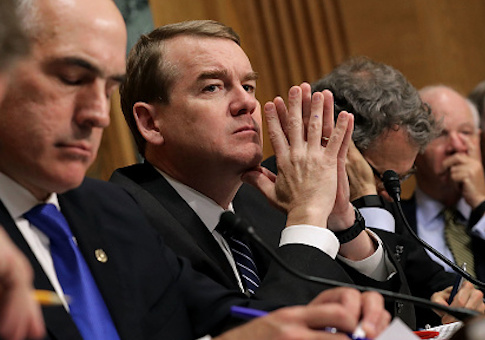No Democratic presidential candidate is paying less attention to younger voters than Colorado senator Michael Bennet, at least when it comes to Facebook advertising.
Bennet targeted more than 90 percent of his ad spending on the social website at those 45 years of age or older since his campaign launch in May, according to an analysis by 2020campaigntracker.com. Bennet is not the only Democratic contender betting big on older voters. Former vice president Joe Biden is running a close second in the generational advertising gap. The same data set shows both Bennet and Biden are all-but ignoring the 13-24-year-old category.
Biden, who has consistently led primary polls, has been criticized as out-of-touch with younger primary voters. "Joe Biden's Democratic primary foes are zeroing in on generational change as a leading argument against him as they sharpen their lines of attack two weeks ahead of the party's first presidential primary debates," a recent CNN report noted.
Neither the Biden, Bennet, nor Klobuchar campaigns returned requests for comment about their advertising strategies and the data collected by 2020campaigntracker.com.
Upstart candidates have been more likely to focus on rallying young supporters. Tech entrepreneur Andrew Yang, a first-time candidate, has targeted more than 80 percent of his Facebook ad budget at the 45-and-under crowd, while just putting less than 5 percent towards reaching voters over 65. Mike Gravel, the 89-year-old former senator, and South Bend Mayor Pete Buttigieg are also among the most aggressive in their outreach towards the younger Facebook audience.
In terms of actually harvesting support from younger people in polls, Vermont senator Bernie Sanders continues to lead the field. His Facebook advertising reflects those demographic advantages. Nearly 65 percent of the Sanders campaign’s advertising on the platform was targeted towards those 45-and-under between early May and Mid-June. That could be a risky strategy heading into primary season, which tends to skew older than general elections in presidential years.
An April New York Times report noted Sanders's outsized support among young voters during the 2016 primary, but said those efforts failed to increase turnout in early primaries and caucuses. Across 25 states that tracked age in both 2016 and 2008, Democrats saw turnout fall by more than 100,000 young voters, according to a report from the Center for Information and Research on Civic Learning and Engagement (CIRCLE).
"While our research shows that young peopled indeed heavily favored Senator Sanders, these data suggest that in many states the candidate did not inspire a surge in turnout from young Democrats—at least not one large enough to match that of then- candidate Barack Obama in 2008," the report found.
